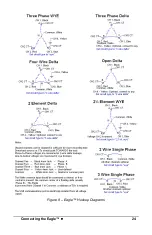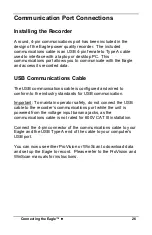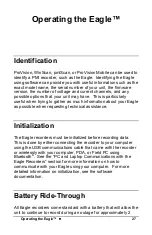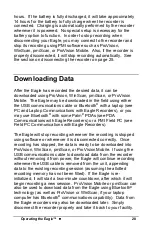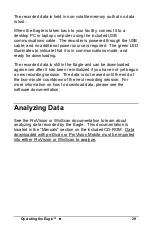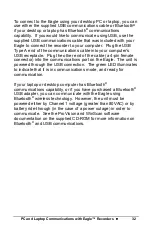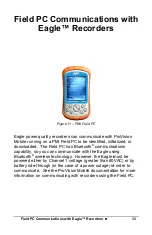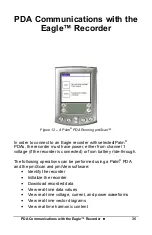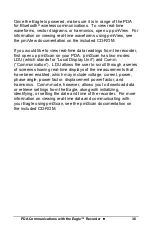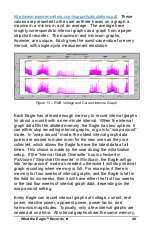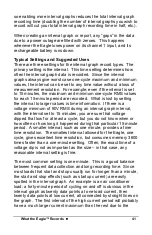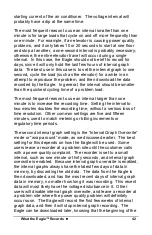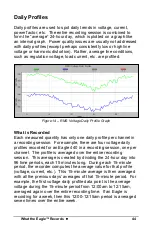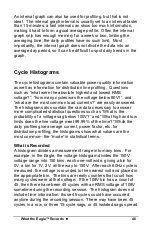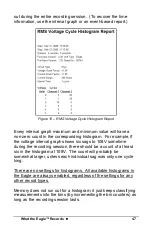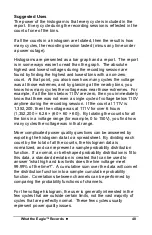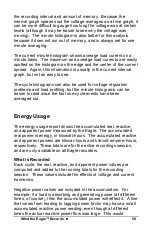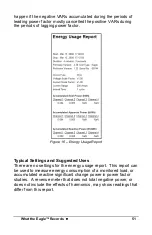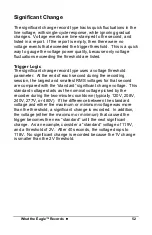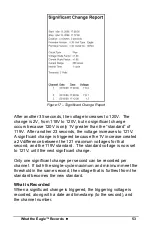
What the Eagle™ Records
••••
38
thresholds and settings. A low threshold, such as 0.5%, may
cause the Eagle to log records that are not really worth analyzing.
These extraneous records often hide the few important ones.
Conversely, a higher threshold may cause the recorder to ignore
important disturbances.
Although it is often possible to use regulatory limits or other known
standards to set thresholds, choosing the proper thresholds can
be a problem in itself: sometimes you need to know something
about the disturbance before you can set proper thresholds to
capture it. Despite these potential pitfalls, triggered record types
are powerful tools in power line monitoring. They are most useful
for capturing voltage disturbances and power quality problems.
The captured events are then presented in a text report.
Triggered record types include power outage, abnormal voltage,
event change (i.e. event capture), significant change, and
waveform capture.
Non-triggered Record Types
The second class of record types is not event driven. These
record types are always logging data, regardless of how
interesting, important, or unimportant the data may be. The
classic example is a paper stripchart, which continuously logs
data. There are no thresholds to set, although there may be a
parameter to determine how often to collect data. The logged
data is usually presented as a graph of data points. Although
there may be a large amount of data, using a graph lets the eye
pick out important data. Problems such as sags and swells are
easy to see in the interval graphs. In addition to voltage quality
studies, these record types are used for finding daily trends in
current or power values, measuring power factor, etc. The
advantage of not having thresholds to set is that there is no
question about what data will be recorded. The disadvantage is
that sometimes much of the recorded data is unimportant. For
non- power quality data such as power factor measurement, there
is no disadvantage. These record types include interval graphs,
daily profiles, histograms, and energy usage.

